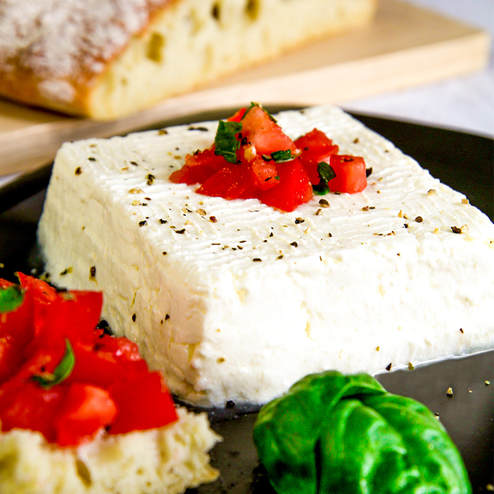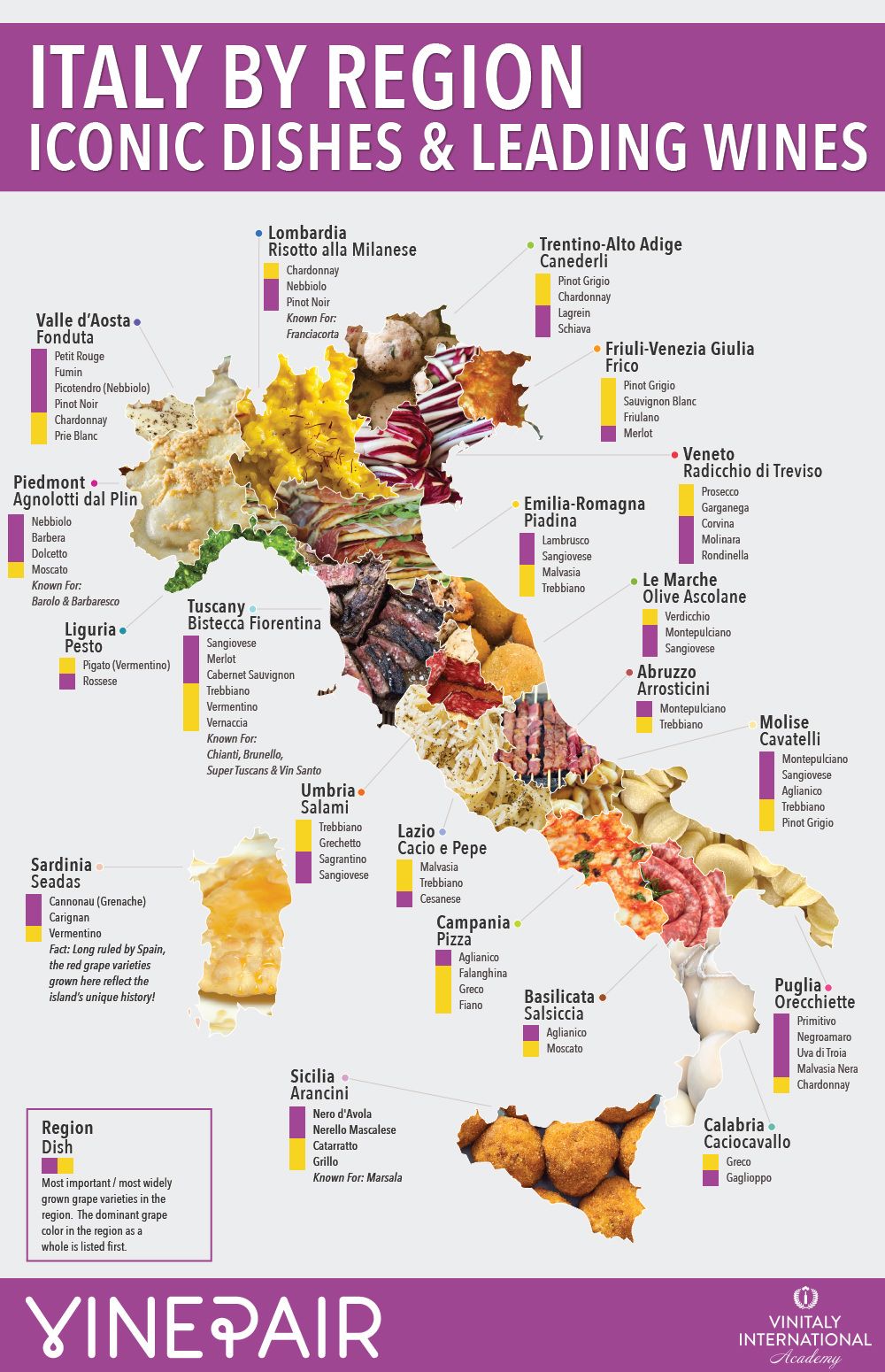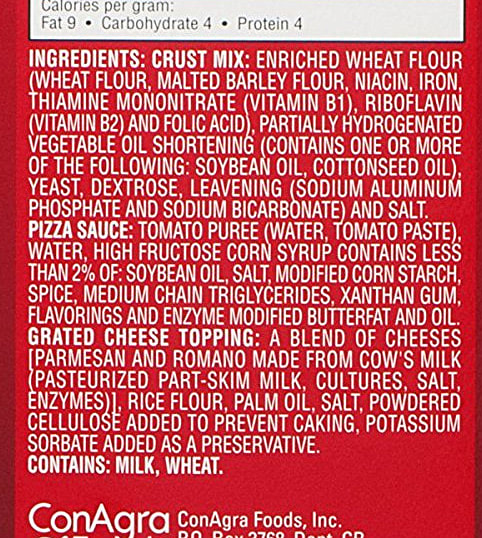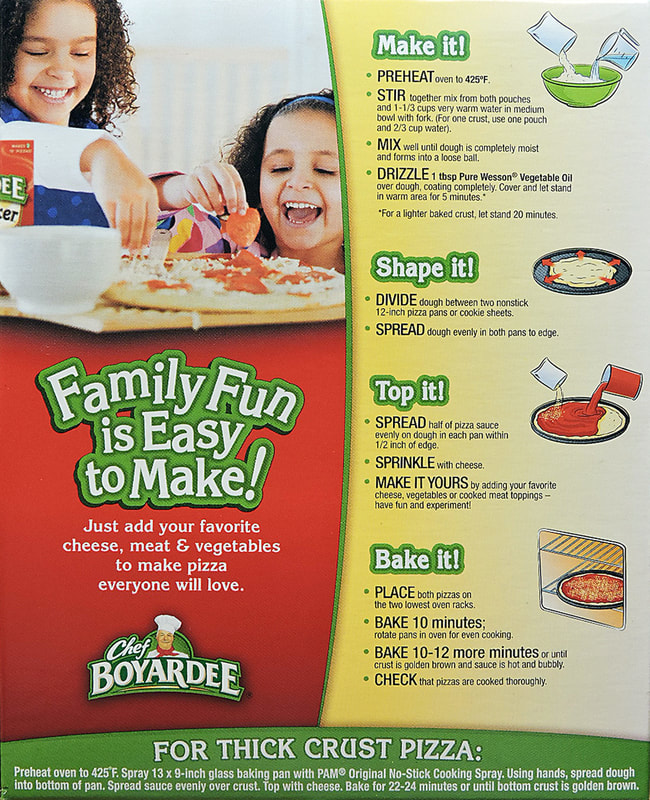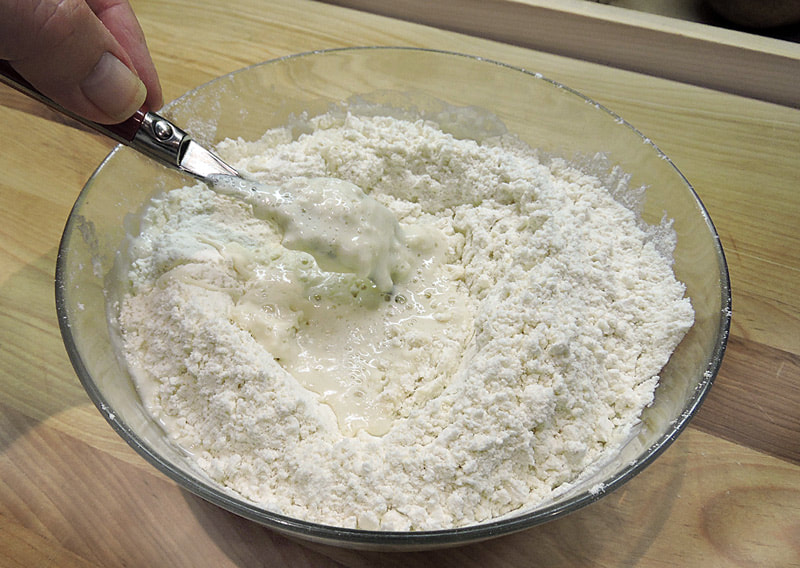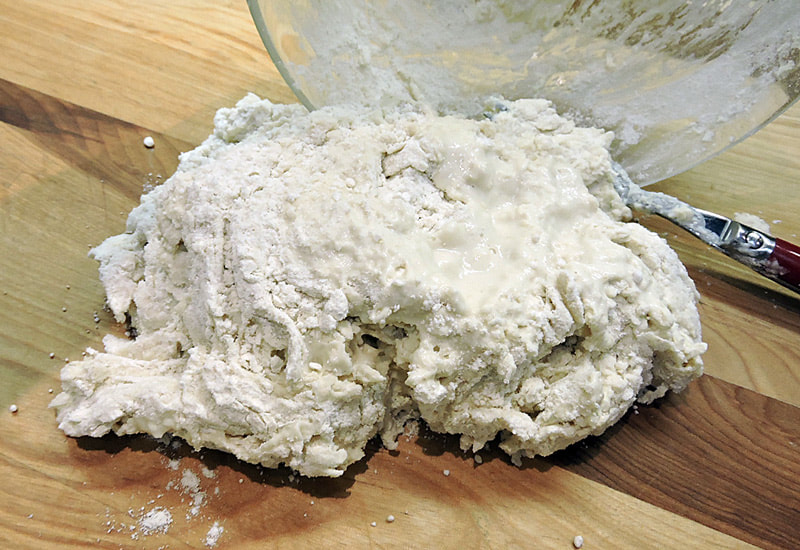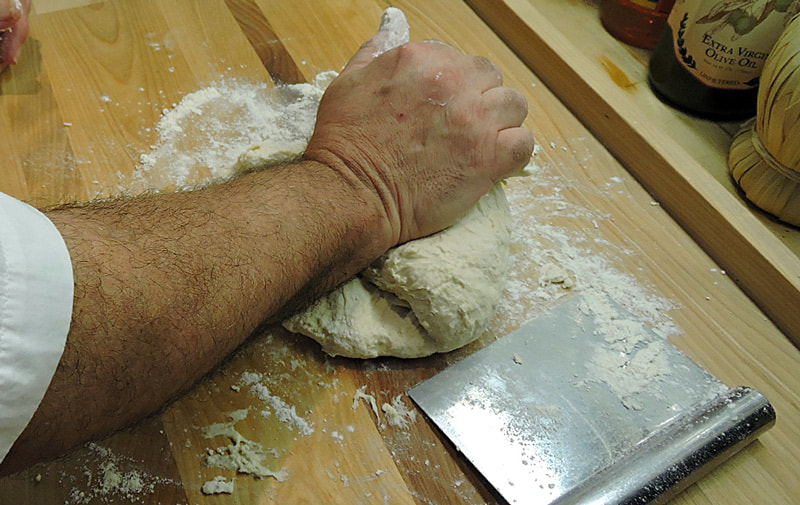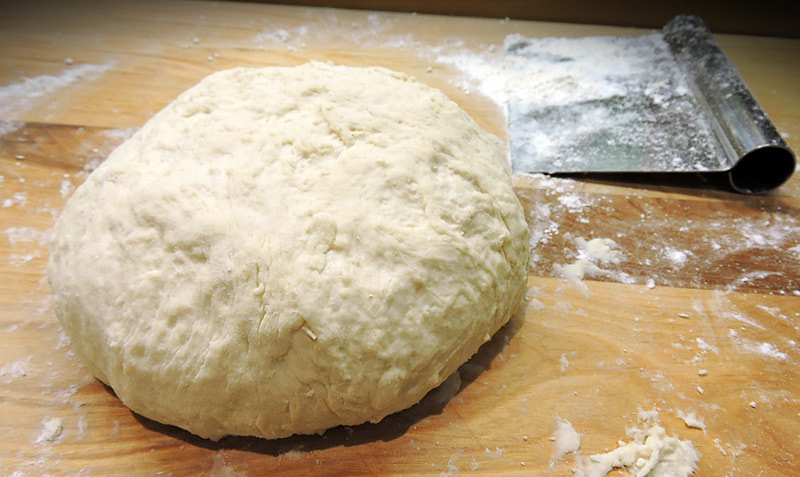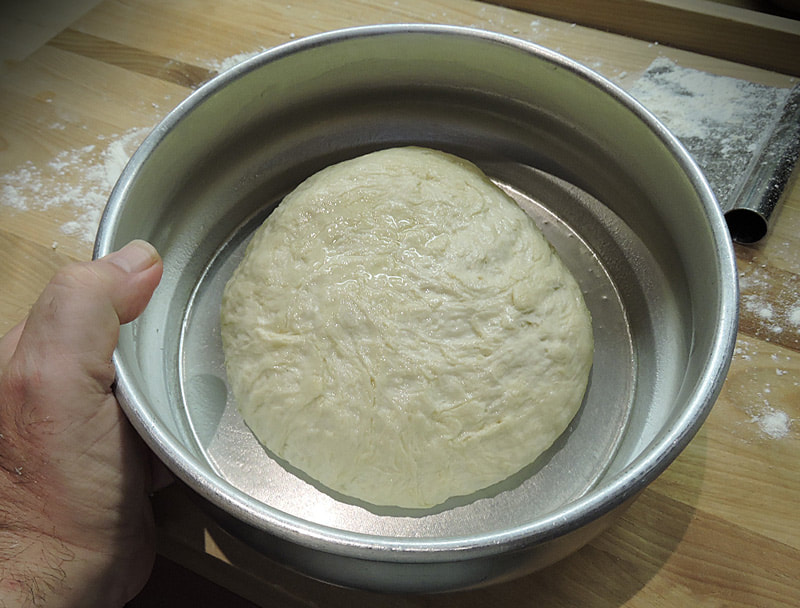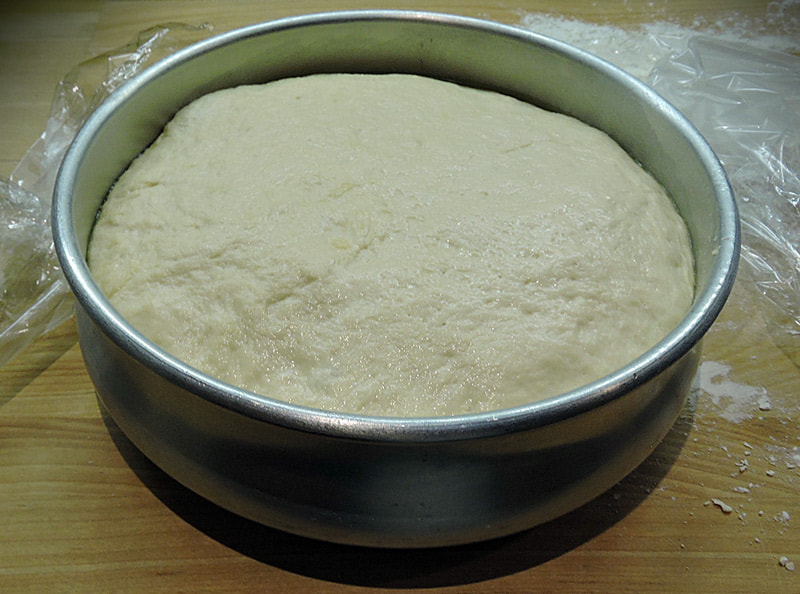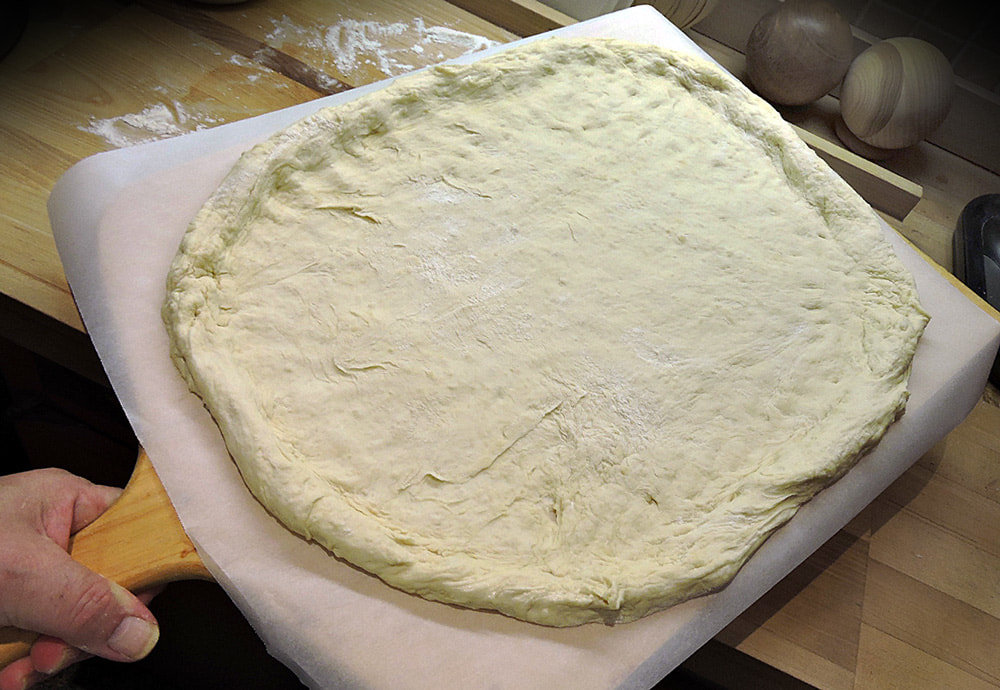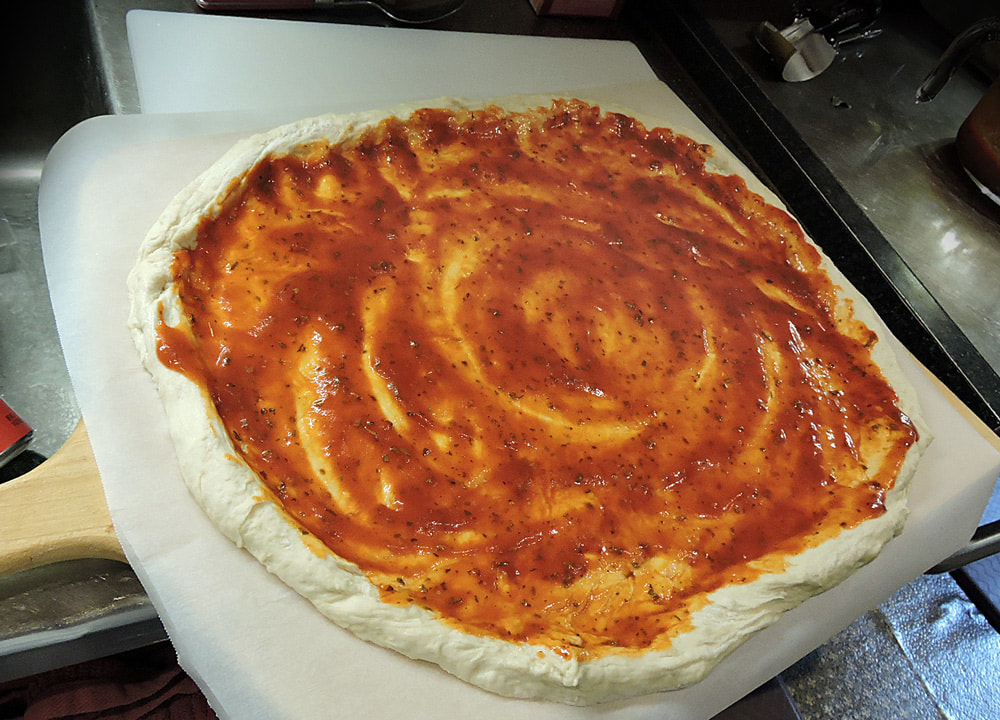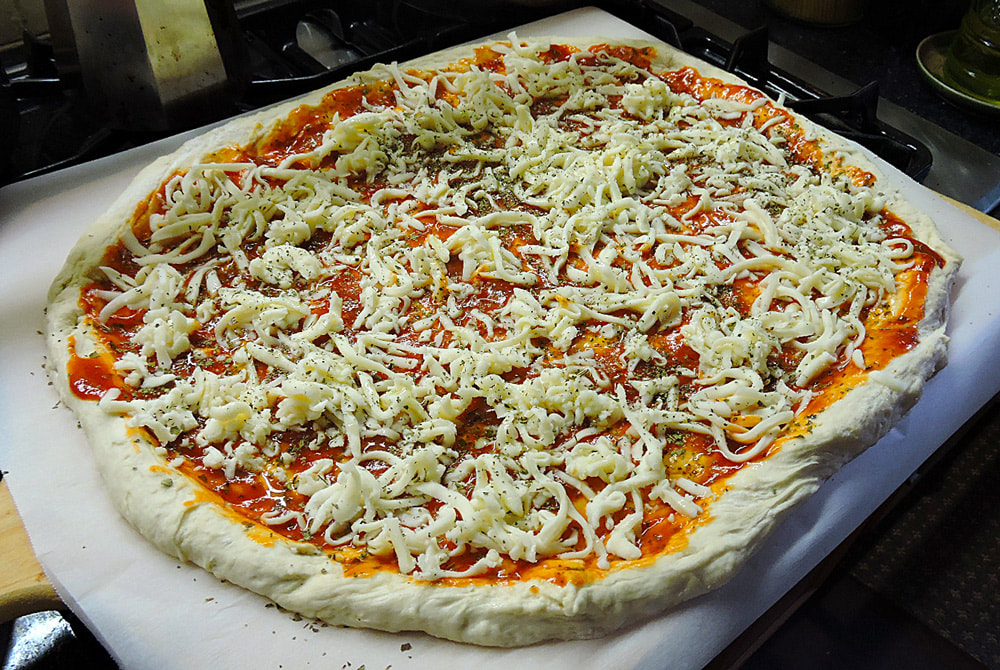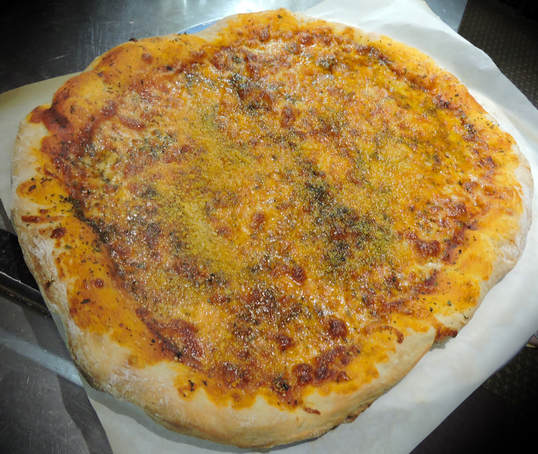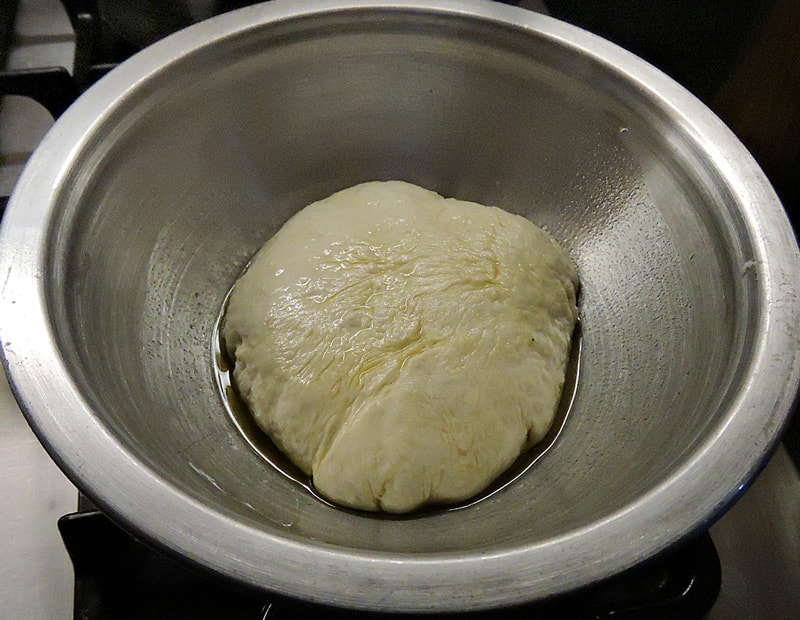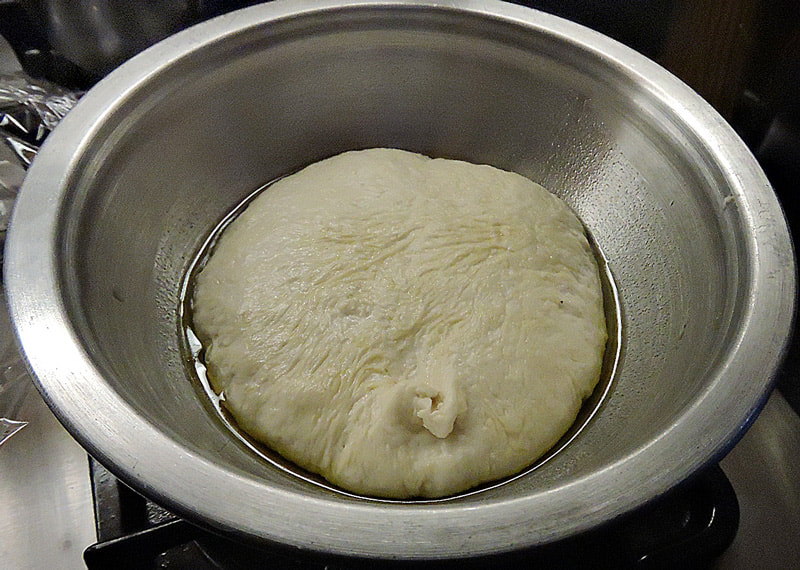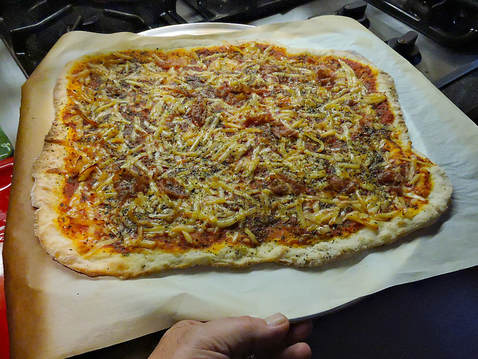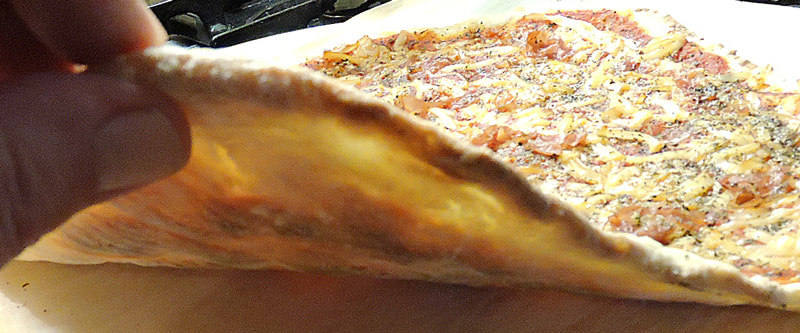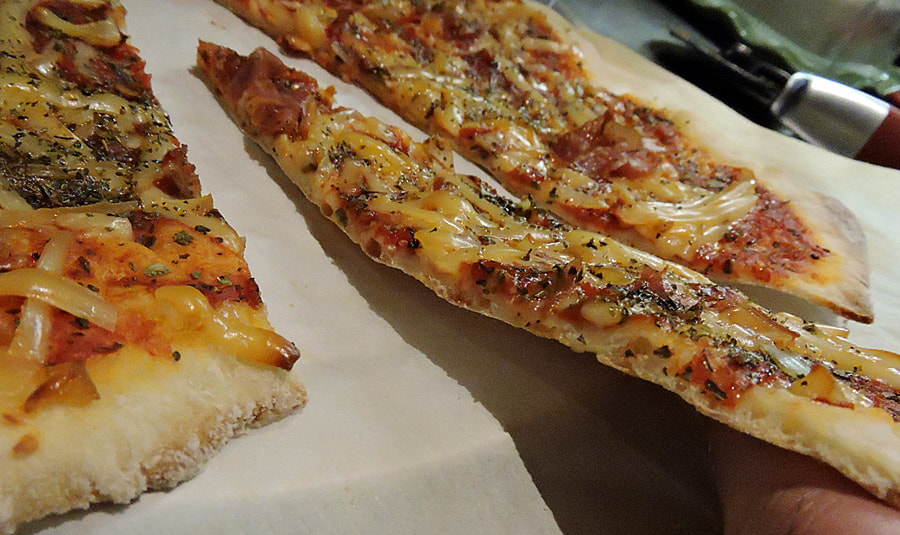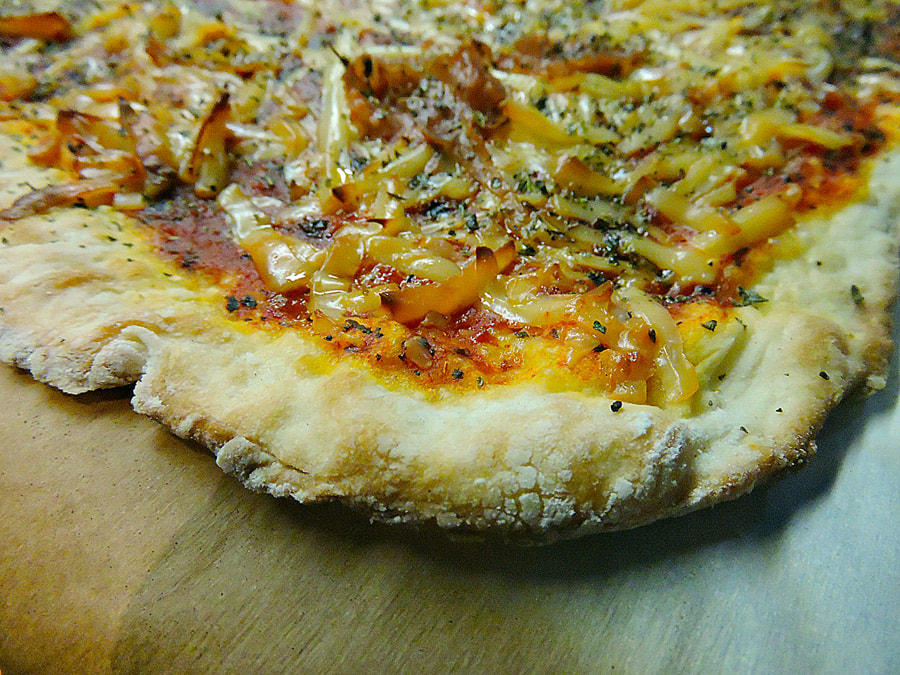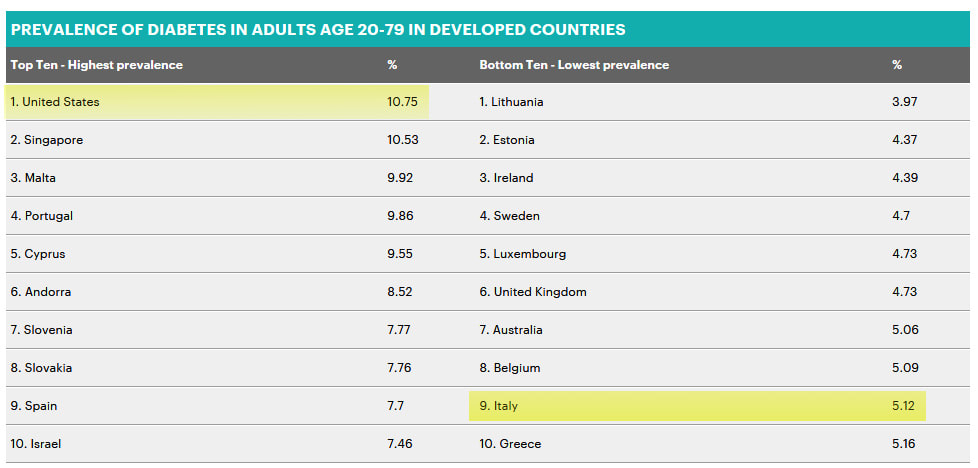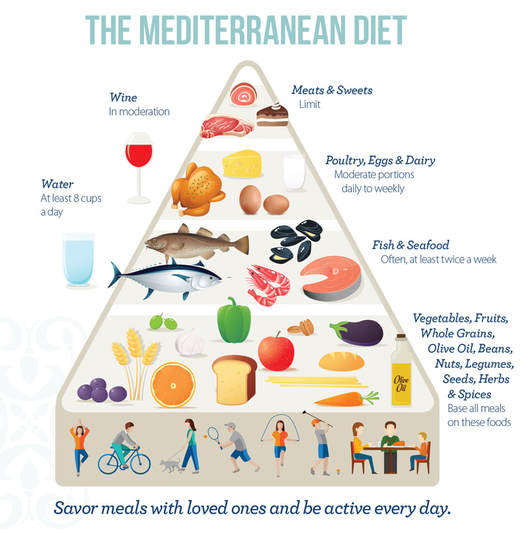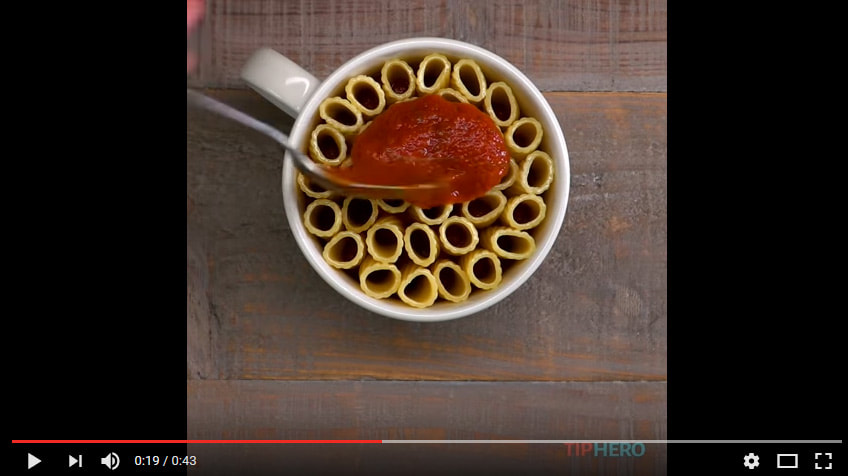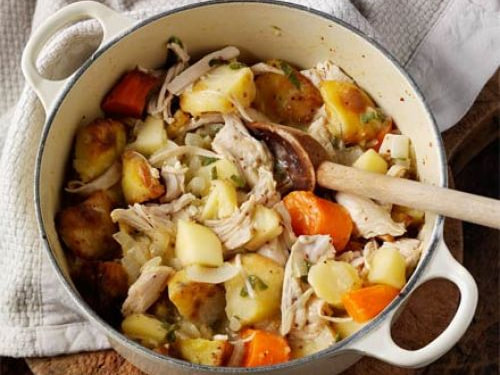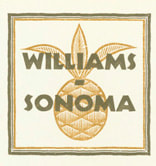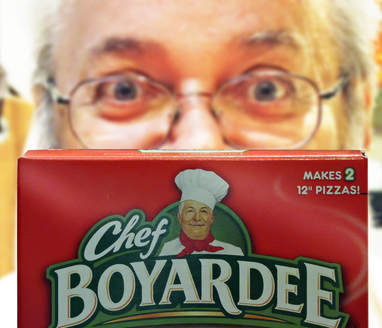 A few months ago I wrote an article about the history of the Chef Boyardee Pizza Maker kit. To be truthful, I had never even noticed its existence, having come from a family where Mom made her own pan pizza once in a while or we simply ordered fantastic take-out pizza from Cuomo's Pizzeria, located right around the corner from our house. Cuomo's was where I developed my passion about pizza... I helped grind the cheese, mixed the dough, helped making rounds of dough, worked the counter a bit,I delivered pizzas, and folded literally thousands of pizza boxes. I know pizza... but not "kit pizza". In the Boyardee post, I promised that I would test this kit out when I had the chance. Well, I did more than that. I created a Pizza Crust Kit Challenge between the Chef Boyardee kit and the generic brand of pizza crust in a packet. While the Boyardee Pizza Maker kit comes with cheese and a can of sauce, the generic pizza dough is a packet to make a crust only. Both can make two small or one large pizza. First, I opened the Boyardee kit... 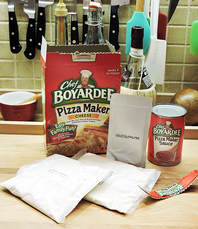 This is what I found inside: Two packets of flour/yeast mixture, one packet of grated cheese and one can of "Pizza Maker Sauce". First I checked out the cheese by tasting it. This is a blend of Romano and Parmesan with some fillers like rice flour and powdered cellulose, but to my surprise, this tasted a lot better than any of the grated jar cheese that I've tasted. Oddly, as far as I can tell, Boyardee (or its parent company, Conagra) doesn't make a jar grated cheese. They should! I tested just about every major brand of grated cheese a while back and this little packet outdid them all. I've read that many people have a nostalgic view of the way their Mom's would make this "kit" pizza back in the Fifties or Sixties and actually prefer making it with only this little packet of grated cheese. I'll be adding some grated mozzarella. 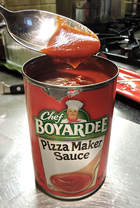 As for the sauce, I thought I might find it acceptable and expected a watery, basic pizza sauce, but what I found was an overly sweet and syrupy sauce that I couldn't even consider putting on a pizza. It tasted like the sauce Boyardee uses in their canned pasta recipes. Personally, since Chef Boyardee (cheese or beef) Ravioli was one of the few meals I started making for myself when I was about 9 years old, I have a nostalgic love of their sauce... but this sauce was much more sweet and inappropriate for a pizza. The ingredients list high fructose corn syrup as the second ingredient. No thanks. Out came my sauce and I poured the can down the drain. As for the flour packets, it seems that they list yeast in the ingredients along with "leavening", so I supposed the dough would have some decent body to it after it rises. Next, I read the instructions. I was amazed to see that no where did they mention "kneading". They instruct to mix the flour/years mix and "very warm water" in a bowl with a fork. They forgot to mention that water over 120 F will kill yeast. "Very warm water" seemed vague to me. My temperature was around 115. OK, so I mixed with a fork and this is what I got... So I kneaded for a minute or so anyway... I oiled a bowl (with Extra Virgin Olive Oil, not "Wesson oil" as they directed), covered with plastic wrap and put the dough aside to rise, but not for 5 minutes or 20 minutes ("for a lighter crust") as they directed in the instructions, but for one hour. I know better. At this point, I preheated my oven to 425 F, as per directions. After the dough had risen, I punched it down, turned it out on my floured board and formed the pizza. I transferred it to a parchment lined wooden peel. Always the rogue, I did not follow their instructions to "spread the dough in a non-stick pizza pan". If I did want to bake this pizza in a pan, I would have oiled the pan with light olive oil anyway (most dough will stick, even in a Teflon pan). I would be baking this pizza directly on my pizza steel with parchment under it. I wanted to get the crispiest crust possible. 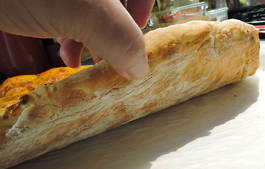 I then topped the dough with my own sauce, and then topped with shredded mozzarella and the packet of Parmesan/Romano cheese that was in the kit. Instead of baking for 20-22 minutes as per directions, I baked for 15 minutes on my pizza steel at 425 F and got great results as you can see... The photo on the right shows a nice crusty bottom with all the feel and "fold-ability" as a New York City slice of pizza. Their cheese was a nice compliment to the mozzarella, but I was so glad I used my own sauce. In the end, I would rate their "kit" only 1 star if I had made it with their sauce and in a pan. The way I made it I rate it a solid 5 out of 5 stars. But in the end, I can't really recommend spending $3.50 on this pizza kit since their can of sauce is not worth using. The only elements I'd recommend using is their cheese and the flour/yeast mix. It's just not worth it when I can make a pizza dough from scratch very easily for very little cost. My suggestion to Chef Boyardee? Two of the components of the Kit are excellent. Create stand-alone products for each... a jar of your grated cheese and a packet of the pizza crust flour/yeast mix. I would highly recommend both if they existed! 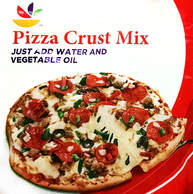 Making the Store Brand Pizza Crust Mix I tend to shop at either Stop and Shop or Giant supermarkets, which is where I picked up their store brand Pizza Crust Mix. As I said earlier, this is to make a crust only... you provide all the toppings. 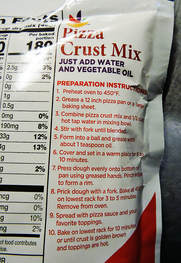 Still doing my rogue thing... I didn't use a "greased" a pan, I didn't use "hot tap water", I let the dough rise for one hour, not just 10 minutes. I did bake at 450 for 5 minutes or so. I used my own sauce, mozzarella and baked the pizza on top of a parchment sheet on my pizza steel. The results were... interesting. As you see below, there wasn't much rise. When I saw "leavening" listed in the ingredients, with no mention of yeast, I expected this result. This is probably a baking powder based leavening. Good looking pizza, right? Well, the taste was powdery. It was a very thin crust pizza... like a cracker crust. But again, there was nothing tasty about the crust... even a bit metallic tasting. I rate this 1 star out of 5. I like a thin crusty pizza once in a while, but this just didn't cut it. In the end results, both pizza crust mixes failed as far as I'm concerned. If Boyardee offered their crust as a stand alone product, I might be a customer and would recommend it. The generic? Forget about it. Please.... make pizza at home. Here's how! --Jerry Finzi
 Why are Americans More Likely to Get Diabetes? The Better Question is Why Are Italians So Darned Healthy? Of course, one of the main reasons for Italians staying so healthy is the way they eat. There is the Mediterranean diet itself, fish, fresh vegetables, fruit and the use of olive oil in cooking. Meats in Italy are not eaten in large quantities as in the U.S. and the amount of fat in the meats they prefer is also less. Meat is eaten as a separate course in smaller quantities, if at all. Lean pork is popular.  Alcoholic beverages are typically drunk with meals and binge drinking is not a socially acceptable concept (although the young are going to clubs and bars more and more). And of course, there's the health benefits many studies have attributed to drinking a moderate amount of red wine in one's diet. In general, the Mediterranean Diet, especially with its use of olive oil (a mono-unsaturated fat) over butter, is considered Heart Healthy by most studies. People who use olive oil tend to have a lower risk factor of both heart attacks and strokes. Another healthy component in the Italian diet is garlic... and not just to keep vampires away. Garlic lowers the chance of heart disease, lowers blood pressure and prevents strokes. It also is very high in antioxidants, considered to aide in the prevention of Alzheimer's disease. Even pasta and pizza are eaten differently in Italy. Italians eat simple pizzas with healthier toppings--not overloaded like American pizzas. Pasta is not served in large servings as in the States, either. As important for relieving stress in life, most families in Italy eat the family meal together--at the same time. Perhaps this promotes a feeling of well being and affords a sense of comfort to la famiglia.  Italians live longer, too. Why? One reason is the inherent exercise in their daily routines. Many Italians in towns throughout Italy take a walk after dinner, usually with their family members and children... the Passeggiata. Communing with neighbors and relatives while talking a leisurely stroll through town adds to one's well being. In addition, the number of hills and steps the average Italian has to negotiate in their daily lives is much more than in the U.S. Most towns were built in an era of feudal warfare, causing them to be built on top of hills and cliffs for protection of their community. This means that most towns are very hilly and have thousands of steps and inclines. It amazed me whenever I saw octogenarians with canes going to the local alimentari to do their daily shopping. Exercise is something they get, whether they plan on it or not. During my three week Voyage though Italy, I lost 18 pounds, even though I felt like I was eating everything in sight... and gelato sometimes twice a day! 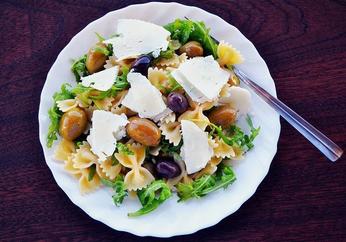 And what about all that pasta and it's effect--especially concerning diabetes? Italians cook their pasta al dente (to the tooth), while Americans tend to eat soft, overcooked pasta. Overcooked pasta has a higher glycemic index, meaning that it can raise your blood glucose. Italians also have smaller portions that Americans do. Think about that the next time you order an overloaded plate of pasta at your local pizzeria or Italian-American restaurant. The rich, Alfredo cream sauce is unknown to most Italians. If you enjoy an Alfredo pasta once in a while, put much less sauce on your pasta. I've seen Alfredo sauce overloaded in most Italian restaurants to the point where the pasta can't be seen! Italians eat pasta without heavy sauces. Oh, and one more thing. Stay away from faux Italian joints like Olive Tree. There is nothing on their menu that is anything like the healthy Mediterranean diet. There is no such thing as dipping bread in olive oil in Italy, and Italians don't automatically put a large bowl of bread or garlic knots (an American thing) on their tables. Consider this old Italian saying... La salute prima di tutto! - Health is first of all! Centanno! --Jerry Finzi Here is a great little recipe video from our friends at Cucina Fanpage... Standing Rigatoni in a Mug. This version backs the mug in the oven, like an individual casserole. There is another version done in a microwave, but I prefer this baking method.
Click on the photo above to see the video. If you want to see how to make a larger version for a large gathering, try our recipe, Torta Rigatoni Piede Bolognese al Forno (baked Standing Rigatoni with Bolognese). When I was a boy, my father would often cook when my Mom was out with her "lady friends" to take in a Broadway show or an evening in a Manhattan night club. His style of cooking was something very different from my mother's... He would look into our old Philco refrigerator, see what was leftover or what vegetables we had, and somehow--without a recipe--whip something up to satisfy us for dinner. When I'd ask what we were going to have for dinner, he just say a dialect word which to my ears sounded like "ba-BOOK-ya", with the "ya" part trailing off becoming nearly imperceptible. I knew the adventure was about to begin... Recently, I was determined to research this word, even though I was unsuccessful in finding out its meaning in past attempts. But this time, I asked the friendly people in the I Love Molfetta Facebook page... and hit pay dirt! As it turns out, the word is papocchio... (or papocchia), pronounced "pah-POH-kee-yo". Now that I see it spelled out, I can picture my father pronouncing the "P"s almost like "B"s, with his soft-mouthed, mumbling Molfettese manner of speaking. Words are blended in his dialect. The end of words sort of trail off. So, "ba-BOOK-ya" fits perfectly with my memory! Papocchio can have multiple meanings: Intrigue, cheating, trickery, a mess. Shockingly, I have even discovered that the word was used by northern Italians to refer to someone messing up a situation, in the "typical Southern Italian style", or "papocchio". Wow! Northern Italians had many such words and idioms that denigrated the Southern Italian. So, in this context, a "papocchio" is described as a screw-up not worthy of being considered a Northern Italian. The sarcastic use of the word was used as the title of the 1980 comedy film Il Pap'occhio--the Pope's Eye. They took the meaning of the word "papocchio" and added the ' between the "pap" and "occhio" forming the compound word for Pope's Eye. It was such an irreverent look at the corruption of the Pope and the church that the film was shut down with two weeks of its release.  My dad, Sal My dad, Sal What does all this have to do with Dad's "ba-BOOK-ya" recipe? Not much, but it does give a lot of historical perspective to the word papocchio. When I asked my Dad for its meaning, he motioned with his hands with his fingers stretched out with a twisting movement, "When I was a kid we'd put everything in one bowl or pot... (hands twisting) all mixed up". He told how his poor immigrant family would gather around the table for the family meal, each having their own fork but only one big bowl in the middle of the table. He said that they would use whatever they had that day to make the meal... a tomato or two (if in season, grown in their tiny Hoboken backyard), some ramps (wild onions picked near the railroad tracks), broken up pieces of stale bread, potatoes, smelt or eel or crab (if he or his brothers caught any that day on the river), a bit of cheese, some salt and olive oil. Sometimes he would fry the leftover ingredients to heat everything together in a large pan. Other times he would make a sort of cold rice or pasta salad. He also liked to make a frittata using eggs as the base for all the found leftover ingredients. Mom had her mainstay recipes, but with Dad, it was as if he was a stand-up comic doing an improvisational skit--being able to handle whatever the audience threw at him. Ecco... Ba-BOOK-ya... Papocchio! Recipe? Not really... Here is the simple method of how my father, Sal might have thrown a papocchio together for a weekday meal.
If you have small bowls, portion out the dish. Otherwise, everyone grab a fork and dig in, but no fighting! Serve with crusty bread and a glass of red wine on ice mixed with 7-Up. That's the way Dad would have done it... --Jerry Finzi |
Archives
May 2024
Categories
All
|

